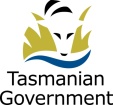Hosts
Welcome
Both Tasmania and New Zealand have long and proud histories in the sub-Antarctic.
From the early days of whaling and exploration, to a time of conservation and research we see now, both feel an innate closeness and inextricable bond with the cold southern waters and the lands they hold.
With the southernmost points of the main landmasses of Tasmania and New Zealand only around 4°21ˈ and 1°20ˈ in shipping language, or 485 and 146 kilometres, from the edge of the sub-Antarctic respectively, and with guardianship of six sub-Antarctic island groups between them, both are proud to take a leading role in the access to, and preservation of, this southern region.
With both Tasmania and New Zealand rightly laying claim as international gateways to the Southern Ocean and Antarctica, we welcome travellers and researchers from around the world and offer safe harbour and welcome ports on long Antarctic and sub-Antarctic journeys.
The Tasmanian Government and the New Zealand Department of Conservation are proud to provide a forum where experts from around the world can come together to ensure the future of this special part of the planet.
Tasmania
Tasmania has a proud heritage of supporting Antarctic and sub-Antarctic endeavour with explorers and scientists using Hobart as a base for expeditions and research since the 19th century.
Tasmanians have a special interest and affection for the sub-Antarctic. Not only do cold air masses from the Southern Ocean bring cold air and blustery winds, Tasmanians are also custodians of World Heritage listed Macquarie Island, which is administratively part of Tasmania.
Like other sub-Antarctic islands, Macquarie Island has a history of commercial exploitation of seals and penguins, but is now a wildlife sanctuary and sub-Antarctic and Southern Ocean monitoring site.
As most Tasmanians won’t be able to visit Macquarie Island themselves, Hobart has a slice of it right in the city, with the world’s only sub-Antarctic plant house. Here, flora of the sub-Antarctic region (particularly Macquarie Island) are kept in a climate controlled environment, with fog and mist mirroring the wet, cold conditions of their home.
The Tasmanian Government welcomes to Hobart all those who share our love for this special region.

New Zealand
New Zealand’s presence in the sub-Antarctic encompasses the Snares Islands, the Bounty Islands, Antipodes Island, the Auckland Islands and Campbell Island / Motu Ihupuku.
The Department of Conservation is the government agency charged with conserving New Zealand’s natural and historic heritage. It is responsible for the conservation management of the New Zealand sub-Antarctic Islands, their protected areas and for the sustainable management of the coastal and marine area.
The region supports globally significant conservation values. All five islands and their surrounding territorial seas have been afforded World Heritage status; the islands themselves have National Nature Reserve status; some of New Zealand’s largest marine protected areas encompass their territorial seas, and the waters around Motu Maha – Auckland Islands also has Marine Mammal Sanctuary status.
The Department of Conservation is proud to protect and manage these special places for current and future generations.














